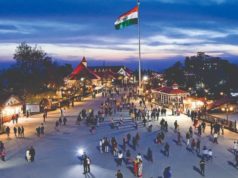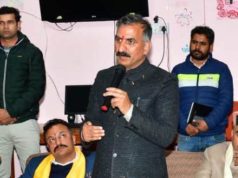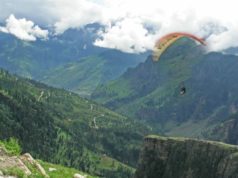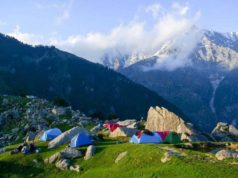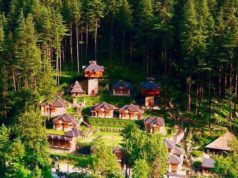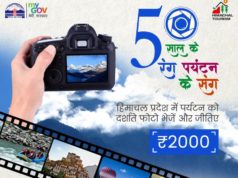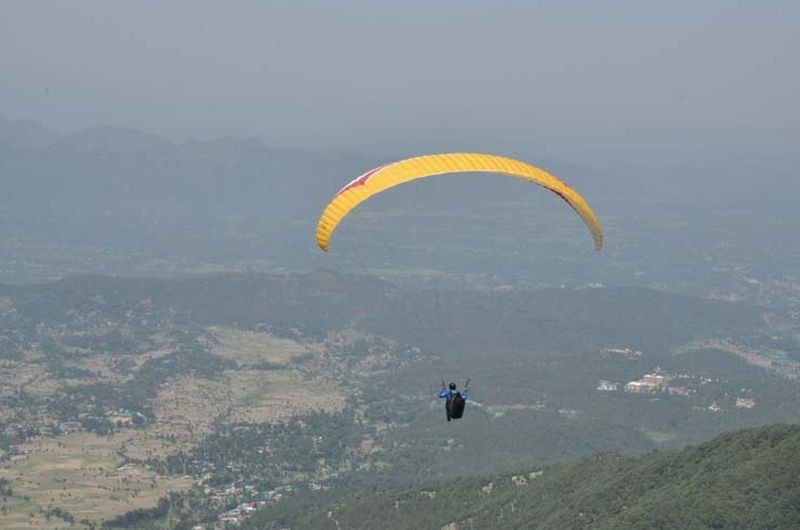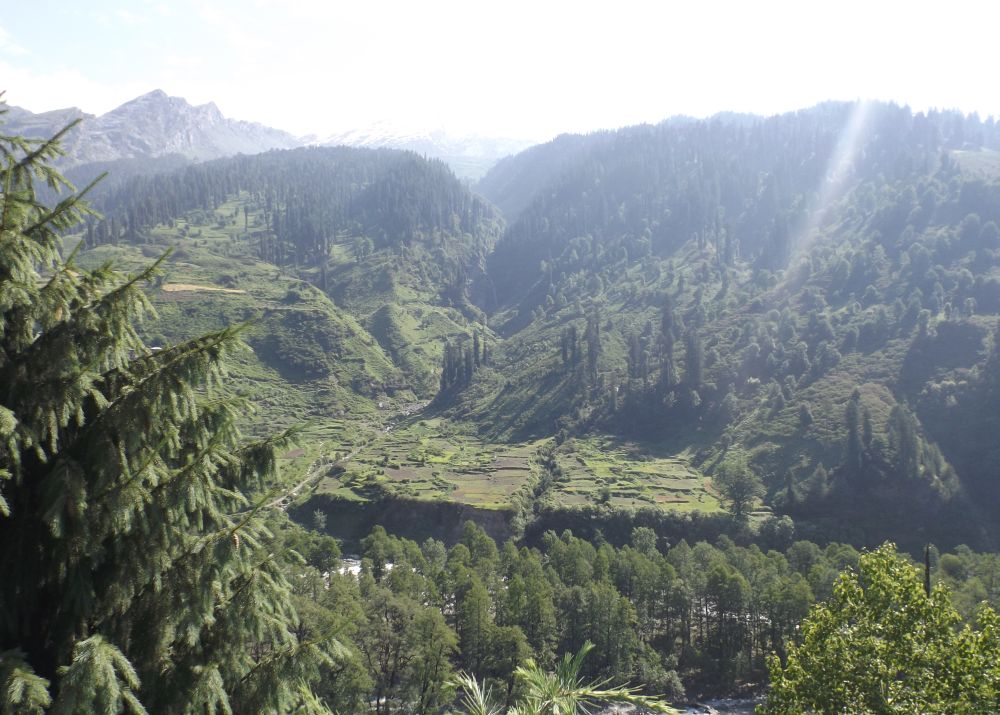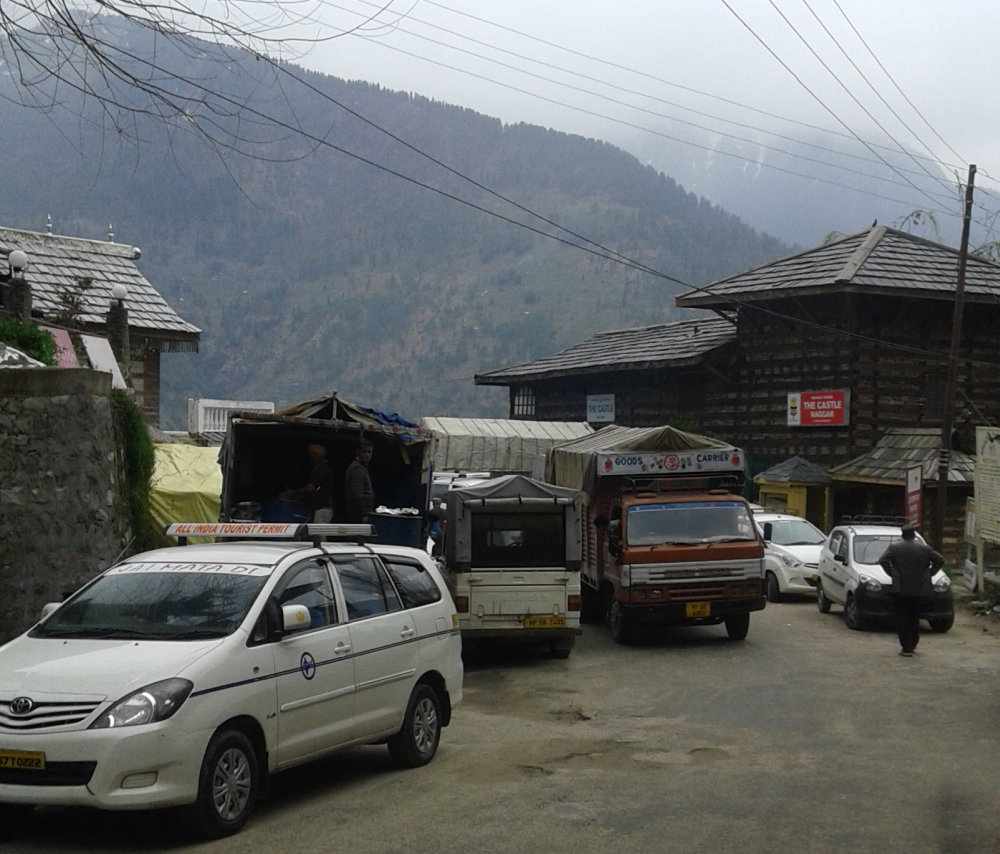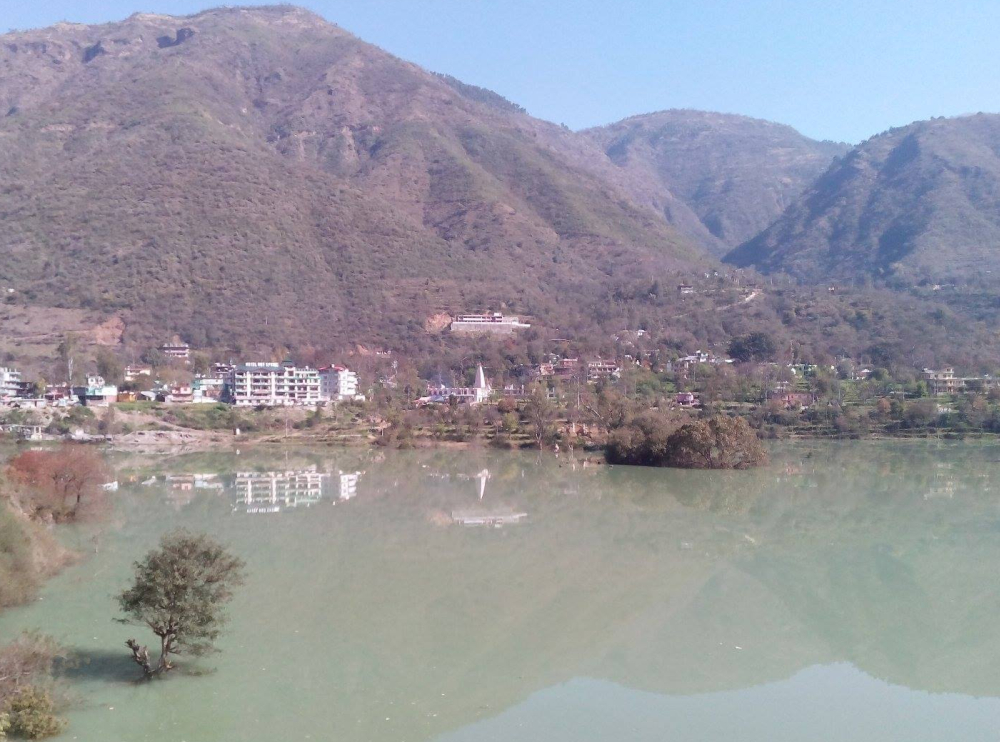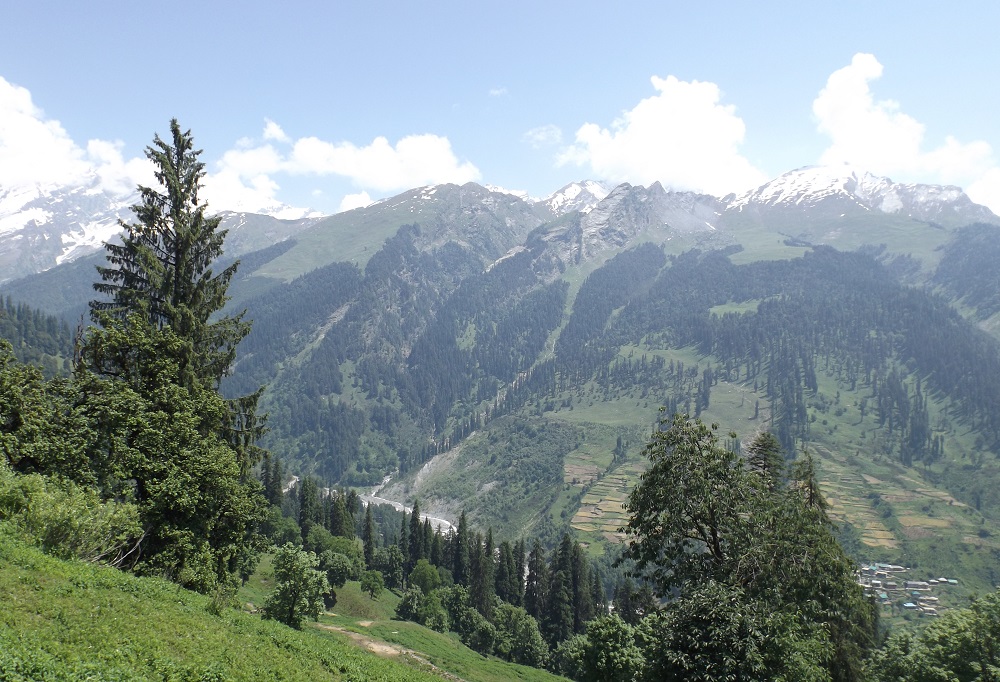“If one was told that monkeys had built it, one could only say “what wonderful monkeys-they must be shot in case they do it again.”
-EDWIN LUTYENS,1912, (ON SEEING THE BRITISH GOVT.BUILDINGS OF SHIMLA, IN A LETTER TO HIS WIFE)
Shimla is home to some of the stunning works of architecture to flaunt, among other natural features like snowcapped mountains, the ridges, graceful valleys, Deodar forests etc. Some of these architectural wonders dates back to the era of British Colonialism influenced by the Renaissance and Neo-Gothic architecture.
In order to understand the idea behind creating such colossal monuments in Shimla we have to peep into the minds of Britishers of those times. As per records available the idea of Shifting Summer Capital to Shimla was mooted by the then Viceroy of British India Sir John Lawrence and was well executed by Secretary of State Sir Charles Wood. In a correspondence to Charles Wood, Viceroy puts it down very aptly “the work of the government is probably treble, possible quadruple what it was 20 years ago, and it is, for most part, of a very difficult nature. Neither your Governor-General nor his council could really do it in the hot weather of Calcutta. At the very best they would work at half the speed.” He asserted that the government shall do” more work in Shimla in one day than what it could do in five days at Calcutta. Hence it was the climatic conditions of Shimla which matched with their Home country – Britain which attracted them to the region.
Other Reason that is well debated is that – Malaria was creating havoc for Britishers in Calcutta particularly during Monsoons which hampered their efficiency as well as health.
Finally, it was in 1864, Shimla was declared the Summer Capital of British India. Here after the pace of construction with well-planned designing and the touch of Victorian engineering was brought to its peak.
Geography of Shimla with respect to its Architecture
Shimla as a town was mainly developed over a series of seven hills viz- Jakhoo Hills, Elysium Hill, Prospect Hill, Summer Hill, Observatory Hill, Inverarm Hill and Bantony Hill. Majority of British era buildings are subjected to these hills.
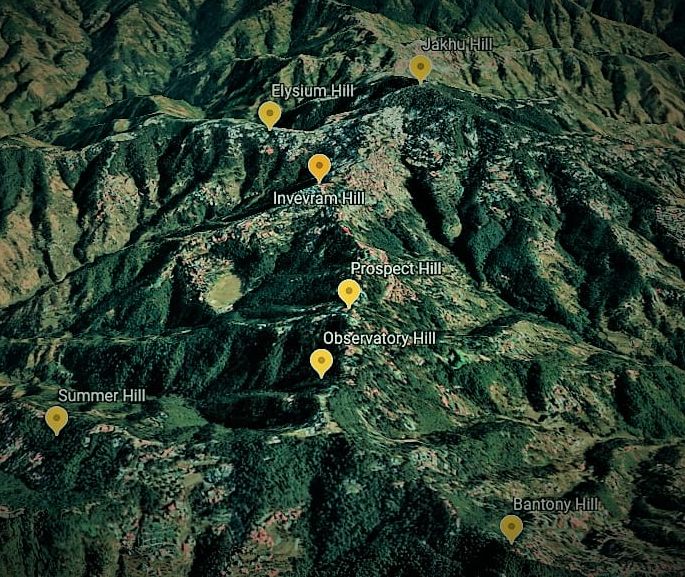
As one of the geographers puts his imagery to use and called it a Dancing Queen of Hills. If one holds the map of old Shimla east side up, one finds Shimla resembling a dancing lady wearing Toga. Her face and hair is Sanjauli. The arm pointing towards South is Kasumpti and the other arms pointing North is the Longwood, Kleston and Bharari.
The Majestic Victorian style Monuments of Shimla
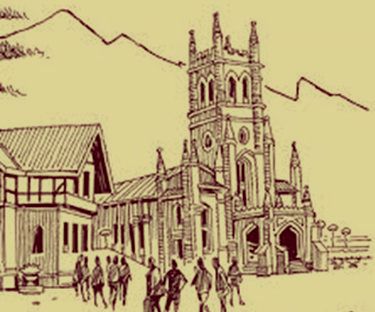
Christ Church – The Ridge: Built in Neo-Gothic style in 1857. The Yellow textured European looking Church on a Himalayan mountain top is irresistibly attractive. It stands as crowning the ridge. Architect J.T Boileau along with engineers from Bengal were instrumental in planning, designing and construction of the Church. The Chancel colourful glasses and stained windows were designed by father of famous writer Rudyard Kipling. These windows represent faith, hope, charity, fortitude, patience and humanity. The tower and iconic clock were added to the church in 1860.
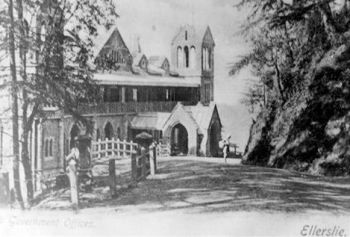
Ellerslie Building: This building houses the state secretariat of Himachal Pradesh. Designed by Lt. Col. H.E.S Abbott. It was constructed by dismantling an old building that houses Military Dept. of Punjab Govt. till 1886. The unique feature of this building is the extensive usage of lime mortar cementing on the rocks quarried from the adjoining hamlet of Sanjauli and Barnes Court. “Summit Hall “where cabinet meetings are held, holds a historical significance as Shimla Agreement of 1972 between India and Pakistan took place here.
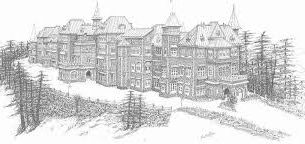
Gorton Castle: Built in 1901-04 with the stones set in lime, red galvanizing iron roofing located on The Mall – Shimla. It was designed by Col. Sir S.Swinton Jacob. Its magnificent stone structure has Gothic architecture combined with Rajasthani features like balconies, chajjas and jallies which gives it a unique architectural outlook.
The three stories building comprises of 125 small and big rooms and is encircled by rosewood like timber blocks which were brought from Andaman Islands. At present it houses the office of Accountant General of Himachal Pradesh.
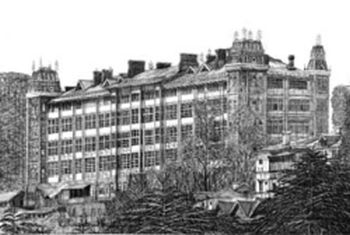
The Railway Board Building: Built in 1896-97, predominantly by using cast iron and steel so as to avoid fire havocs which had gutted many of the structures. Initially this site served as the residence known as “Herbert House and Low Ville”. After that HQ of Public Works Dept. And finally, Railway and Commerce building. Its artistic staircase with a Royal Touch is the unique feature which was later employed in various buildings of major significance. Today it provides an example for the students of architecture and the I.I.T’s for its fire resistant and security features.
Town Hall –Shimla: The Town Hall Shimla was constructed in 1910 during the British Rule in India. It is built on a commanding ridge at the confluence of the grounds of the ridge and the Mall. it is one of the most important landmark of Shimla.
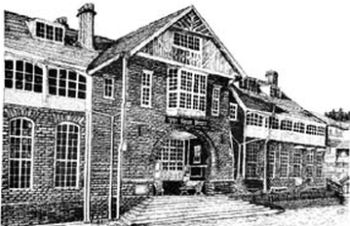
It was designed by Sir Henry Irwin . The original town hall was built in 1860. The renowned Gaiety Theatre was housed in it. Along with the Gaiety Theatre, it had a huge Library, a Hall, Drawing Room, Card room, Ball Room, Armory, Police Station and a retiring room. A quarry was dig out in “Barog” for providing stone for its construction. It has a grey slate slanting roof. The uniqueness of Town Hall lies in the fact the from outside it is portrayed as a cathedral whereas inside it one can find all the features of amusements.
Vice-Regal Lodge: Among the Iconic faces of Imperial Structures, Vice Regal Lodge stands tall not only in Shimla but in entire India. As a colonial structure there are few buildings that can match its impressive proportions and probably none that is so lovingly and carefully preserved.
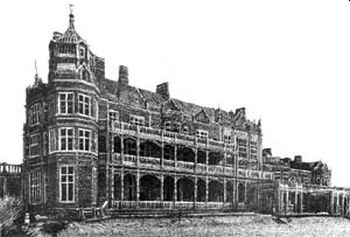
Built on a high 331-acre site on observatory hill, levelled for the purpose, this mock-Tudor or baronial-style building is visible from far down the hillside, and was intended as a proud symbol of Empire. The construction started in 1880 and the Viceroy of India, Lord Dufferin occupied the house 8 years later. At the entrance, which is a well-designed portico, a coat of Arms mentioning designer Hery Irwin and the then Viceroy Lord Dufferin greets the guests. The visitors lounge boasts of the Kashmiri design carved out on a wall nut wood ceiling. Other than these unique features the high mounted fall Chandelier and the portrait of Lady Elgin over the fire places never fails to astonish. It was the first building in Shimla to have electric lightening.
It has earned itself a place in Modern History too as Mahatma Gandhi paid visit to this place 4 times moreover the terms of agreements of infamous India – Pakistan Partition were discussed here in. A round table, on which draft for partition was signed is cut into two halves and is still a major attraction for history lovers. The Shimla conference convened by Lord Wavell in 1945 to approve the Wavell Plan for Indian Self Government was also hosted at this estate.
In 1965, it ceased to be a Rashtrapati Bhawan and Indian Institute of Advance Study for Research was established at the behest of the then President of India Dr. S.Radhakrishnan.


